Service and combat use of training aircraft L-39 Albatros. Part 2
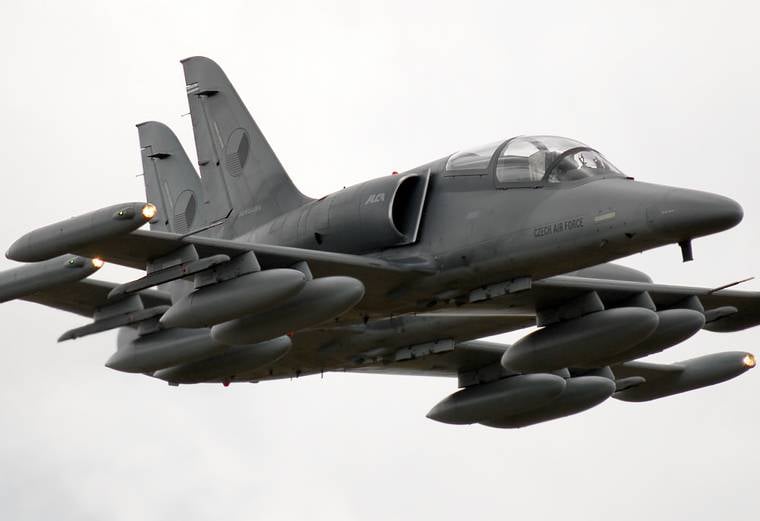
In 90-ies, left without Soviet orders, the management of Aero-Vodohody decided to “search for happiness” in the West, taking part in the Joint Primary Aircraft Training System program JPATS, which provided for the creation of a single training aircraft for initial training for the Armed US forces. In this competition, many world companies engaged in the creation of TCB have experienced their strength. Intensive work on the aircraft, called the L-139 Super Albatros (or Albatros 2000), began in the 1991 year. L-139 decided to equip a number of new systems overseas production. First of all, it should be noted sighting and navigation system with ILS, close to that applied on the F / A-18 fighter. The L-139 installed the OBOGS (On Board Oxygen Generation System) oxygen system used on US Navy aircraft. The installation of the Esprit FMS (Fatique Monitoring System) airborne fatigue diagnostic system was planned, which should have made it possible to bring the glider's life to 10000 flight hours. The project also attracted the British company Martin Baker, with the assistance of which the Czechs finalized their new ejection seat VS-2.
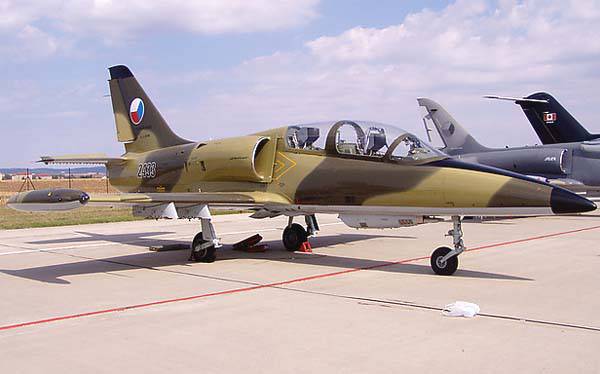
The first copy took to the air in May 1993. After that, the aircraft was repeatedly demonstrated at weapons exhibitions, where it invariably received favorable reviews. However, this did not help in finding potential buyers. The mass production of L-139 was never established.
By the end of the 80-x aircraft, created by the standards of the mid-60-x, no longer fully complied with modern requirements. In order to increase the combat and operational potential, Aero-Vodokhody, at the beginning of 80-s, began to create an improved version. The L-39 combat training aircraft (original designation L-59MS) became a deep modernization of the L-39. His prototype made the first flight of 30 September 1986 of the year. However, the disintegration of the “Eastern bloc” led to the fact that no orders for it were given by the ATS air force. In the middle of 90, 48 L-59E bought Egypt, 12 L-59T received Tanzania. These, of course, were not the same scale of supply as the Czech manufacturers Elok expected.
The competitiveness of training and combat vehicles was dropping a power plant that was clearly weak for the 90-s. In connection with this, TRM ZMDV Progress DV-2 was set on the plane with 2160 kgf thrust. In 1995, the decision was made to purchase 70 Taiwanese-American engines AIDC F124-GA-100 with 2860 kgf. The contract amount is $ 100 million. The F124-GA-100 TRDDF is a unformatted modification of the TFE1042-70 engine installed on Ching-Kuo fighter jets of the Chinese Air Force. This engine combines both acceptable performance and suitable dimensions. Its installation required a minimal revision of the aircraft design. However, despite the more powerful engine that was proposed for installation on the L-59, the aircraft did not receive much distribution. The release of 80 UBS this model can hardly be considered a major success of the Czech aviation industry. For the Soviet Air Force "Elki" built a hundred a year, but work on the L-59 allowed the company "Aero-Vodohody" to stay afloat.
But story The Albatross on the L-59 is not over. 5 June 1999 of the year at the SIAD-1999 aviation show in Bratislava, the first public demonstration of the L-159 ALCA (Advanced Light Combat Aircraft single-seat light combat aircraft) single-attack aircraft was held. The purpose of this aircraft was to optimize the combat capabilities of the Albatross as a light attack aircraft and a subsonic fighter. With the end of the "cold war" in many countries began a radical reduction in military budgets, and therefore again showed interest in the category of light multipurpose combat aircraft. It was assumed that they would be quite effective and inexpensive, and this would enable not very rich states to equip their BBC with them.
The first production car entered service with the Czech Air Force 20 October 1999 year. Operation of the drill machines did not reveal any surprises. For pilots, the new aircraft was generally similar to the familiar L-39, and the use of computer diagnostics of onboard systems made life easier for technicians. L-159 has repeatedly taken part in various air shows and NATO exercises. During long flights, there was a congenital deficiency of the aircraft - the absence of an in-flight refueling system, which is why the L-159 pilots did not plan missions for more than two hours.
The more powerful F124 Garret engine and crew reduction to one person made it possible to significantly improve flight data compared to the base L-39. Significant changes were made to the layout of the fuselage. Before the cockpit front pressure bulkhead, its design was significantly redone. The nasal radiotransparent fairing has become much longer and wider. Under it was a mobile elliptical radar antenna Grifo L sized 560x370 mm (originally, this antenna was developed for the Grifo F radar as part of the modernization program of the Singapore Air Force F-5E fighter jets). The maximum speed of the aircraft increased to 936 km / h. On the seven nodes of the suspension, you can place a combat load of 2340 kg. The weight reserves, formed after the liquidation of the second cabin, were aimed at booking the cabin and allowed to increase the fuel supply and, as a result, the combat radius. Thanks to an improved sighting and navigation system, it became possible to use adjustable bombs, AGM-65 Maverick missiles and AIM-9 Sidewinder air combat missiles.
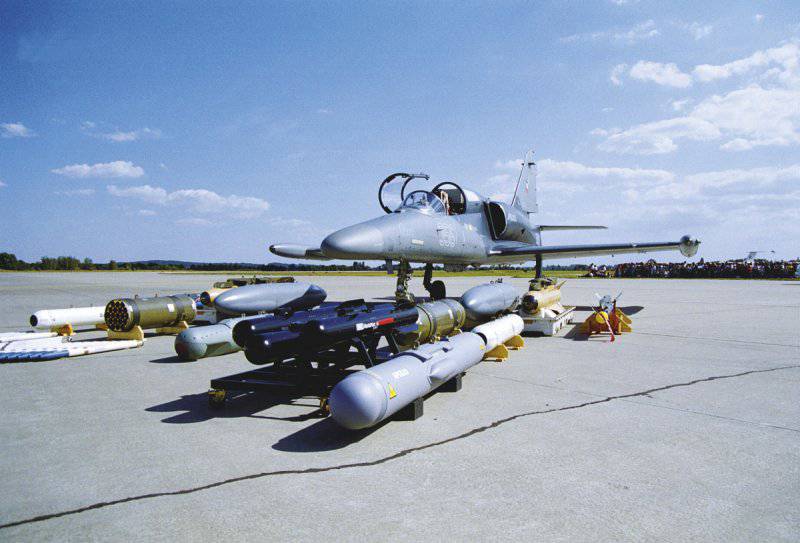
But the cost for a light attack aircraft, despite the increased combat performance, turned out to be excessive, due to the extensive use of expensive imported components, engine and electronics of Western production. In 2010, the manufacturer asked for it $ 12 million. Considering that at the beginning of 2000's in the world, there were a large number of inexpensive Elok in the world in the mid-to-late 80's that are in good condition, potential poor buyers preferred them. The production of single L-159 ended in 2003 year after the construction of 72 aircraft. For a small Czech Republic, such a number of light attack aircraft turned out to be redundant, and there were no buyers for them. An attempt to reanimate a new “Elku” double-seat was not very successful, the double TCB L-159T also did not find sales.
As a result, most of the built L-159 turned out to be unclaimed, and the aircraft went “for storage". The Czechs have repeatedly unsuccessfully demonstrated them to representatives of Latin American, African and Asian countries. Several aircraft bought by American private aviation companies involved in the provision of services for combat training and training of the US Air Force and Navy. In 2014, it was possible to conclude an agreement with Iraq for the supply of 12 L-159. The agreement also provides for the delivery of another 3 L-159, which will become a source of spare parts.
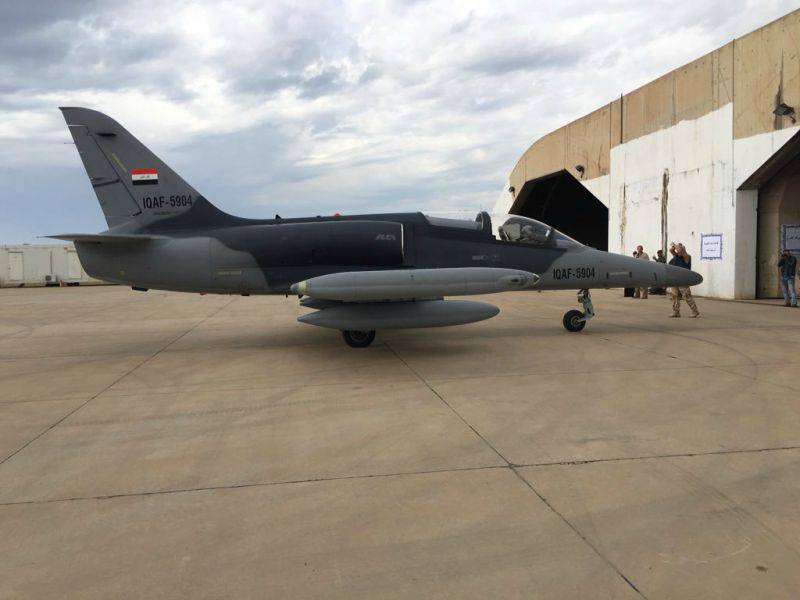
A number of sources mentioned that this transaction was initiated by the United States. The Americans thus helped their European allies to get rid of excess aircraft and strengthened the capabilities of the Iraqi Air Force in the fight against IS. Under the terms of the contract, 4 combat aircraft must come from the presence of the Czech Air Force, and the rest will be taken from storage. The first two L-159 were delivered to Iraq on November 5 2015. According to media reports, the Iraqi L-159 was used to attack Islamist positions in the summer of 2016.
Despite the fact that Russia decided to create its own YTS-130 TCB, the operation of the L-39 is still ongoing. According to the Military Balance 2016, Russian power structures have an 154 TCB L-39.
In 1987, the aerobatic team “Rus” was established on the basis of the Vyazemsky Aviation Training Center DOSAAF, the pilots of which are still performing at L-39. Currently the group has 6 aircraft. At various times, the L-39 aircraft flew in flight teams: Belaya Rus (Republic of Belarus), Baltic Bees (Latvia), Black Diamond and Patriots Jet team (USA), Team Apache and Breitling (France) , White albatrosses (Czech Republic), "Ukrainian Kozak" (Ukraine).
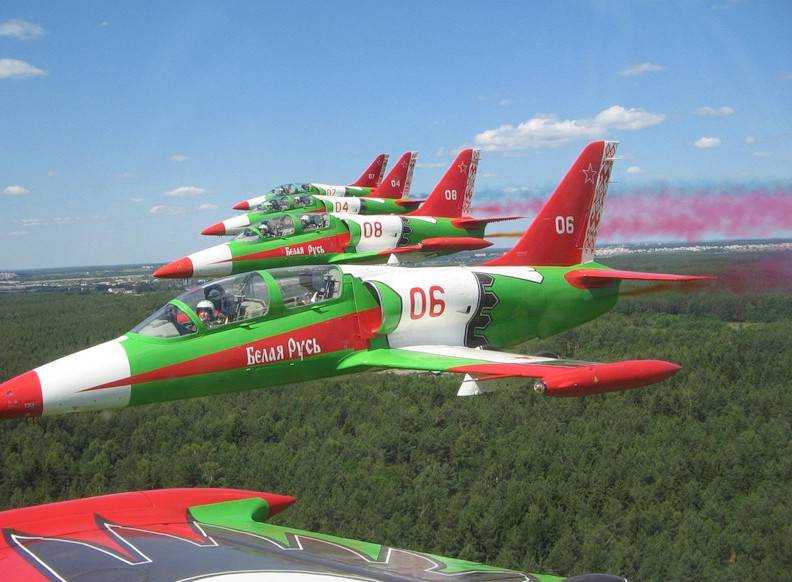
A lot of L-39 of various modifications from the composition of the Air Forces of the countries of Eastern Europe and the former USSR republics turned out to be in the USA. Especially the Ukrainian authorities succeeded in the sale of used Soviet aircraft. L-39 turned out to be a real "gold bottom" for a number of private American companies specializing in the repair, refurbishment and sale of old aircraft.
Many wealthy amateur aviators are willing to pay a lot of money for the opportunity to make their own flights on a light jet plane. A pioneer in the restoration and subsequent sale of L-39 was the company Pride Aircraft.
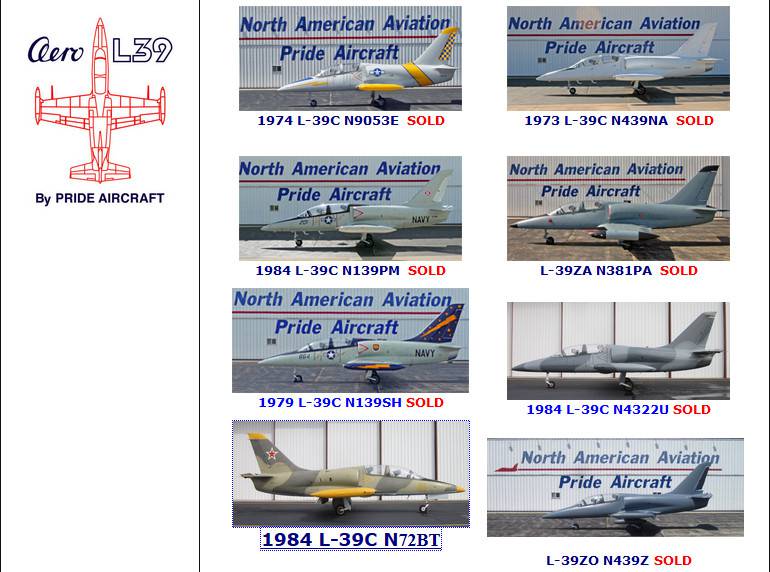
The first such restored car, which received an American airworthiness certificate, was sold in 1996 year. Since then, the number of cars restored and sold by Pride Aircraft has gone to dozens. During repairs, in addition to troubleshooting, replacing and restoring components and assemblies, the installation of modern communications and navigation equipment is also carried out. The cost of one restored L-39, depending on the year of production, glider resource and condition, is $ 200-400 th.
The user of several L-39 and L-159 is the largest US private airline Draken International, specializing in providing services to the military department. All aircraft of the company flying in the interests of the Pentagon are in very good technical condition and regularly undergo scheduled and remedial repairs. The main location of the company's fleet is the Lakeland Linderve, Florida airfield.
Several Albatrosov are available to ATAS (Airborne Tactical Advantage Company), which also provides training services for air defense calculations and the organization of air combat training for pilots of the Air Force and the US Navy. Usually, L-39 imitates enemy attack aircraft trying to break through to an object protected by interceptors or an air defense missile system. And also put interference or towing the target. An important advantage of the "Albatros" is that the cost of their flight time is several times less than that of combat aircraft performing similar tasks.
"Albatross" very actively filmed in adventure films, where they often depicted jet fighters and demonstrated dizzying aerobatics. "Elki" were noted in about a dozen films, the most famous are: "Deadly weapon-4 ”with Mel Gibson,“ Tomorrow will never die ”with Pierce Brosnan,“ Gunsmith ”with Nicolas Cage. The popularity of L-39 in the film industry is explained by the low cost of flight time, ease of control, good take-off and landing qualities, which allows you to fly from small lanes and photogenic appearance.
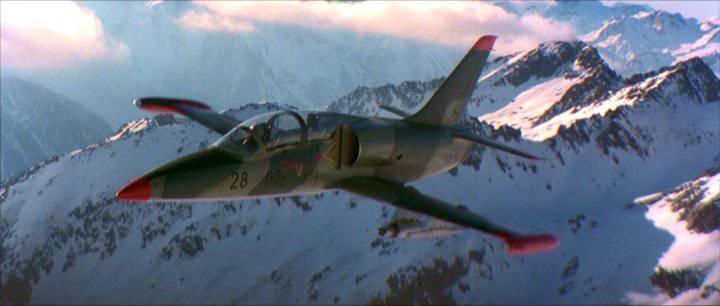
The peak of the L-39 career in the post-Soviet space has long passed, and it’s not just that the plane no longer meets modern requirements. Under the changed political and economic conditions, the Czech company Aero-Vodohody disappeared from the main customer, which was the USSR. However, it is too early to say that the Albatross will soon disappear completely from the airfields prematurely. Even in Russia, the replacement of “Elok” with modern Yak-130 is going slowly, and in some countries there is no alternative to them at all. The Albatros, built at the end of the 80, still has a solid resource reserve, the car has a good potential for modernization. Ukraine has advanced the furthest in this regard. In 2010, the first two L-39М1 were transferred to the Ukrainian Air Force. During the modernization, the aircraft received an AI-25ТЛШ engine (thrust increased from 1720 to 1850 kg and twice (from 8-12 seconds to 5-6 seconds) the pickup time was reduced), improved power plant control system and on-board emergency flight recorder of flight information additional sensors and devices. In 2015, the Ukraine adopted the L-39M. This machine differs from the basic version by the presence of the BTK-39 on-board training complex, which is designed to simulate the performance of the MiG-29 fighter target complex. It is a flying simulator to prepare the pilot for combat work on the MiG-29 fighter. However, the Ukrainian industry was not able to carry out a massive modernization of the existing TCB, and there are isolated modernized units in the troops.
Unlike Ukraine in Russia, the L-39C modernization was considered unpromising. Although together with LII them. Gromov CJSC “Russian Electronics”, the company “Gefest” and the corporation “Irkut” offered their own modernization program. But the case was limited to the restoration of part of the TCB.
Talking about L-39, it is impossible not to dwell on its combat use. Apparently, the Afghan "Albatross" was the first to take part in the battles. Beginning in August of 1979, the Afghan Air Force 393-th UAP, based in Mazar-i-Sharif, began to be regularly involved in launching bombings and air reconnaissance. After the fall of the Najibuly government, the surviving L-39Cs became part of the Air Force of the Uzbek General Dostum. They were used in various inter-Afghan internal "showdowns", including in battles with the Taliban. Several planes flew to the Taliban and to Uzbekistan.
By the time the United States began the "anti-terrorist operation" in Afghanistan, none of the "Albatross" was in flight condition. In 2007, there was information that the United States is considering the option of purchasing a new L-159T or restored L-39 for the Afghan Air Force. The planes were to be used for training pilots and as light attack aircraft and reconnaissance aircraft. However, in the future, the choice was made in favor of the Brazilian turboprop A-29 Super Tucano.
Iraq bought 22 L-39C and 59 L-39ZO in Czechoslovakia. “Albatrosses” were actively used during the Iran-Iraq war. They not only conducted reconnaissance and stormed the positions of the enemy with the help of the NAR, but also corrected artillery fire. Several L-39ZOs were equipped for hanging poured aviation instruments. These aircraft at the end of 80-x, flying from Kirkuk and Mosul airbases, were used to disperse chemical warfare agents in areas densely populated by Kurds, which is certainly a war crime. During the "Storm in the Desert" the Allies tried to inflict maximum damage to the Iraqi Air Force, but until fifty "Albatros" were able to survive the war. Several vehicles that survived the next Gulf War were trophies of the coalition forces.
Libyan L-39ZO in the middle of 80-x participated in the fighting in Chad against the troops of Hissen Habr. They acted both from their own territory and from Chad air bases, including from the airfield of Uadi-Dum. In March, 1987, Habre's forces, who received modern Western armament with the support of the French Foreign Legion, suddenly attacked the airfield of Uadi-Dum and captured the Albatross 11. Subsequently, the captured aircraft were sold to Egypt, where they served for 20 years. Another four L-39 destroyed on the ground during the attack on the Libyan base Maaten Es Sarah. In the initial period of the civil war in Libya, L-39ZO repeatedly rose to attack the positions of the rebels and bombard the settlements they occupied.
But due to low motivation and low qualification, the pilots loyal to Muammar Gaddafi failed to influence the course of hostilities. Among the planes that had flown to the Benghazi airfield occupied by the rebels were two L-39ZO. At the moment, 20 Albatross is formally listed in the New Libya Air Force. It is not known how many of them are really capable of rising into the sky.
During the Cold War, at the beginning of 80, the Soviet Union provided military assistance to the Sandinistas who came to power in Nicaragua. Among other equipment and weapons in Czechoslovakia for the Soviet money were purchased L-39ZO. They were followed by MiG-21bis, but the Reagan administration made it clear that after the USSR delivered jet fighters to Nicaragua, direct American intervention would follow. Whether the leadership of the USSR decided not to exacerbate the situation, or there were some other reasons, but in the end the Elki remained the fastest airplanes in the Nicaraguan Air Force. However, for the bombing of the camps of pro-American "contras" in the jungle, the Albatross approached more than the supersonic MiG-21. Nicaraguan L-39ZO performed well in the fight against high-speed boats, constantly making raids on coastal objects of Nicaragua, and attacks on fishing and merchant ships.
After the collapse of the USSR, conceived as a “training desk” for the training of pilots, the L-39С became one of the most belligerent aircraft in the post-Soviet space. They were first used by Azerbaijanis during the conflict in Nagorno-Karabakh. Earlier, the Azerbaijani "Elki" belonged to the Krasnodar College. After the Armenian air defense system was seriously strengthened by anti-aircraft artillery, MANPADS and air defense systems, the Albatross aircraft involved in air strikes began to suffer serious losses. As a rule, Armenians took them for the Su-25 attack aircraft. They claimed at least five attack aircraft from the ground, but the Azerbaijanis had only 2 or 3 Su-25, and we can say with great certainty that Albatross were among the destroyed planes.
In October 1992, the L-39 couple appeared in rebellious Abkhazia. According to the media, they were presented by Chechen leader Dzhokhar Dudayev. Later, several more aircraft arrived directly from Russia. As a combat load, “Elki” was carried in two blocks of UB-16 and operated from an improvised airfield, equipped on the part of the Sochi-Sukhumi highway in the Gudauta area. Their Abkhaz pilots - the former pilots of the Air Forces of the USSR piloted. They attacked the positions of the Georgian troops that held the capital of Abkhazia, but residential areas often suffered from raids. During the Georgian-Abkhaz war, one Ełka was lost. Ironically, it was destroyed by the Russian Buk air defense system, although Moscow actually supported Abkhazia in the war against Georgia. 16 January 1993, the Abkhaz pilot Oleg Chanba set off for the next task in the border zone, but no one informed the Russian military about the flight. As a result, when the aircraft of the anti-aircraft complex radar detected an unknown and unresponsive aircraft, it was destroyed. The pilot died with the car. At the end of the war, the Abkhaz Albatrosi was deposited. However, in 2003, L-39 was reported in the operation of Abkhaz troops against Georgian saboteurs in the Kodori Gorge. Who sat in the cockpit of aircraft, we can only guess.
After the proclamation of the independence of Chechnya, General Dudayev had at his disposal more than a hundred L-39 Armavir schools, which were located at the airfields of Kalinovskaya and Khankala. For them, there were a little over 40 trained pilots. For the first time, Chechen “Elki” took part in hostilities in the fall of 1994, when the forces of the “Anti-Dudayev opposition” tried to seize Grozny. Aircraft conducted reconnaissance and struck unguided rockets. October 4 1994 of the year when Chechen L-39 attempted to attack the "oppositionists" helicopter, he was shot down by MANPADS from the ground, both pilots were killed. On November 26, the Dudayev Albatroses participated in repelling another attempt by the “opposition” to seize Grozny, and the enemy’s artillery positions were bombed. After Russia 29 November entered into an open war, the entire Chechen aviation was simultaneously destroyed at its airfields.
In 1992, Kyrgyzstan received a significant number (more than a hundred) of the MiG-21 and TC L-39 fighters belonging to the Frunze Military Aviation School (322-th training aviation regiment). In Kyrgyzstan, in the 2002, Albatross supported government forces in operations against Islamist troops in the east of the country. During the fighting, the Kyrgyz L-39 launched missile strikes at NAR C-5 and conducted aerial reconnaissance. Due to the lack of enemy air defense assets, they had no losses. Currently, the Kyrgyz Air Force has 4 L-39.
Ethiopian L-39 fought very actively. First, they acted against the rebels in Eritrea, and then took part in the civil war in the territory, in fact, Ethiopia. When in May 1991, the rebels who fought against the regime of Mengistu Haile Mariam, approached Addis Ababa, the Albatross pilots defended the capital until its fall. Then flew to neighboring Djibouti. In 1993, the province of Eritrea separated into a separate state, but in 1998, another war broke out because of territorial disputes between neighbors. The participation of L-39 in these battles was not noted, Ethiopia used Russian Su-27 in air battles, and Eritrea purchased in Ukraine MiG-29. However, during training flights, the Albatrosss regularly bombarded their own anti-aircraft gunners, confusing them with light attack aircraft of the MV339, which were in service with the Eritrean Air Force. One such incident ended pitifully. 13 November 1998 was shot down by an L-125 low-altitude C-39 air defense missile at the Mekele airfield, the crew of which included the Ethiopian Air Force captain Endegena Tadassa and a Russian instructor, who was not named in the press. Both pilots died.
L-39 became a member of the civil war in Syria. In the past, the Syrian Air Force received an 99 "Albatross" modifications of the L-39ZO and L-39ZA. There is no exact data on how many cars were in flight condition at the beginning of the war. According to some reports, their number could reach fifty.
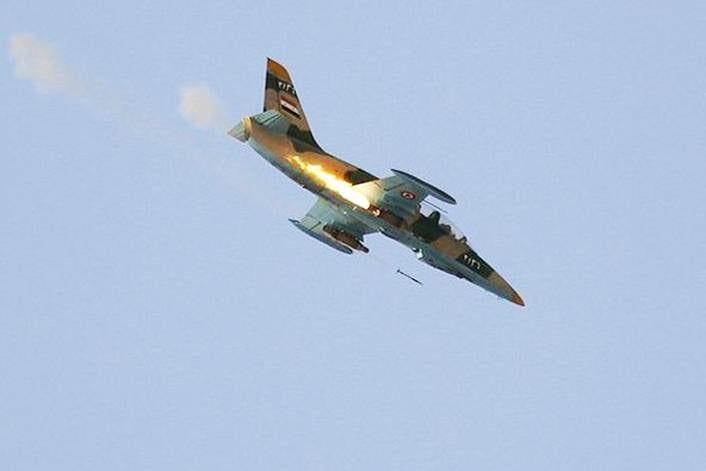
For Islamist militants, L-39 has become one of the most hated aircraft. An important factor affecting the active use of "Albatross" in the fighting in Syria is the short preparation time for re-departure and low operating costs. Relatively low airspeed, good visibility and controllability at low altitudes make it possible to deliver very accurate missile and bomb strikes. Mainly, they used 57-mm NAR C-5 and FAB-100 bombs and FAB-250 bombs. Guns for firing ground targets were rarely used, since the aircraft is very vulnerable to anti-aircraft fire.
Although the plane has one engine, and the pilots are not protected by armor with proper use of the losses were relatively small. At the moment, the fire of anti-aircraft installations shot down about 10 "Elok." A few more cars received serious damage, but managed to return to the air base. Most of the planes were hit during repeated visits to the target or when returning to the airfield with the same route. The presence of the second crew member allows you to search for targets and inform the pilot of various threats and perform anti-aircraft maneuvers in time. However, sometimes danger lurked on the ground: for example, in October 2014, terrorists using ATGM TOW-2A burned L-39ZA at Aleppo airport. Another 7 aircraft became militant trophies after the capture of Kshesh airbase.
It is safe to say that the Albatross combat career is far from over. Unfortunately, the Syrian government has very limited opportunities in terms of maintaining its fleet in flight, while the L-39, which requires less expenditure on the preparation and implementation of combat duty, is very attractive by the cost-effectiveness criterion, aircraft reconnaissance and surveillance. After the start of the operation, the VKS RF in Syria L-39 was less likely to be recruited to carry out bombing attacks. But observers have noted the increased role of these aircraft as reconnaissance aircraft and anti-aircraft gunners during the operations of the Syrian army in the north of the country.
Based on:
http://www.airwar.ru/enc/other/l39c.html
http://andrei-bt.livejournal.com/155831.html
http://www.defenseone.com
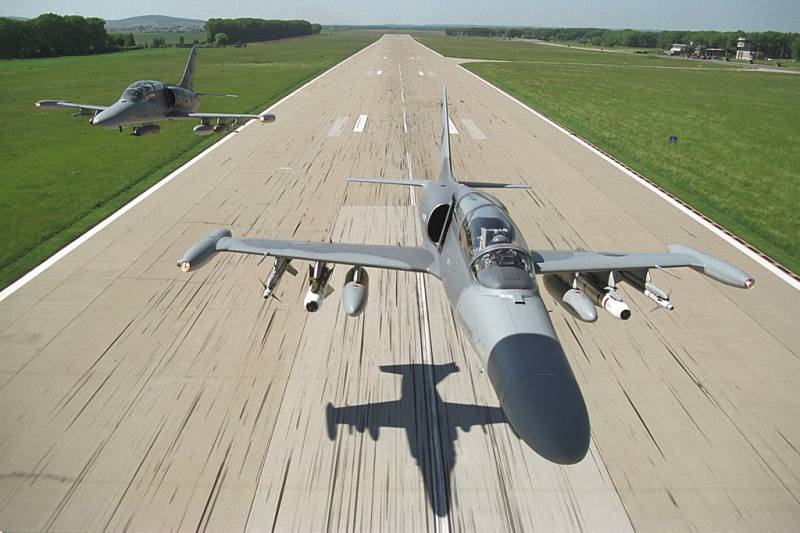
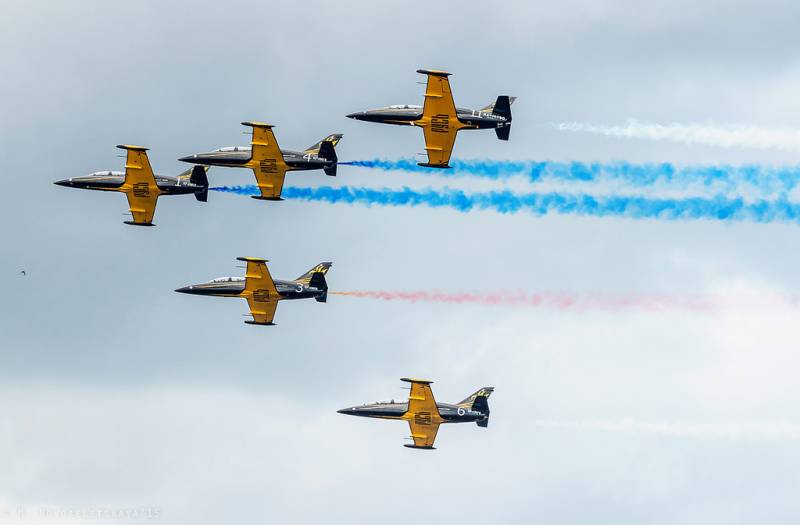
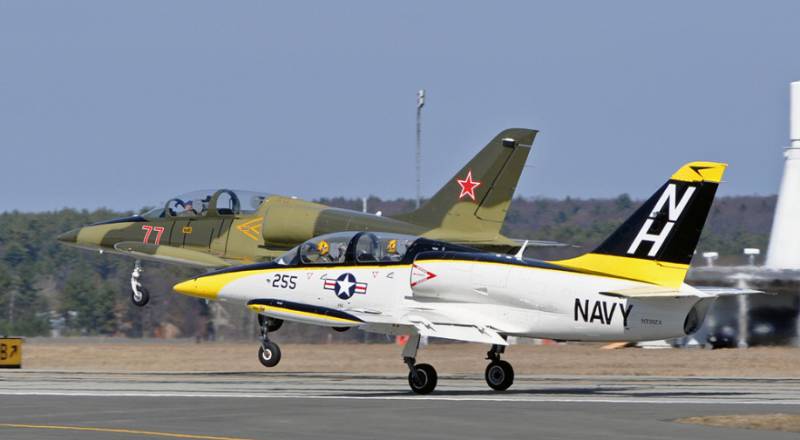
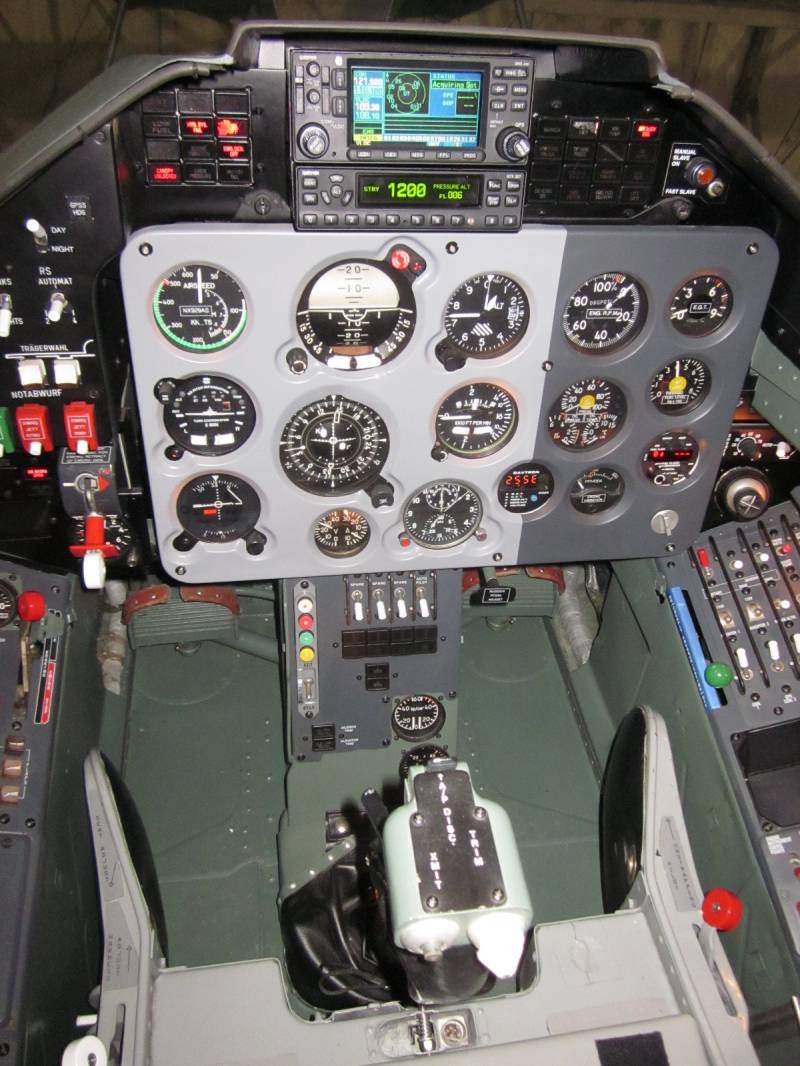
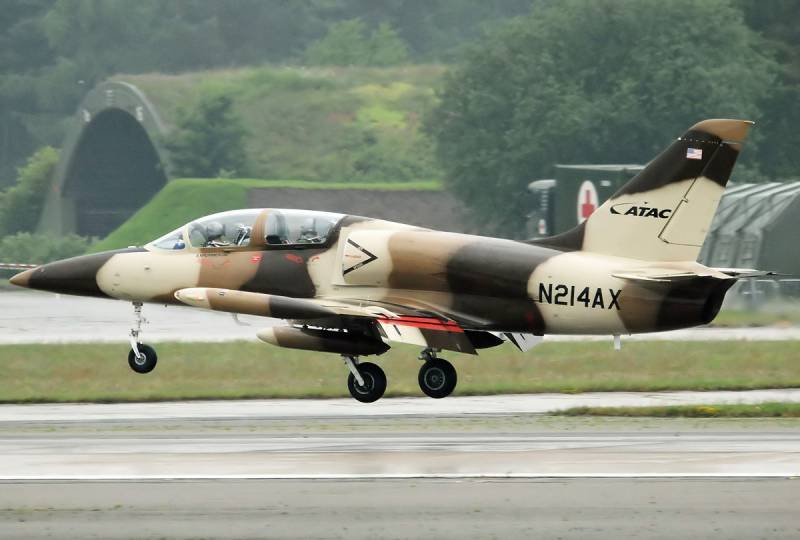
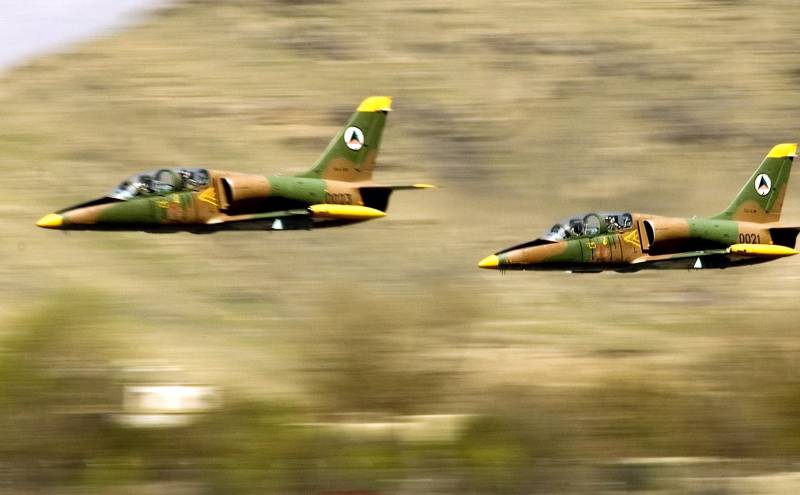
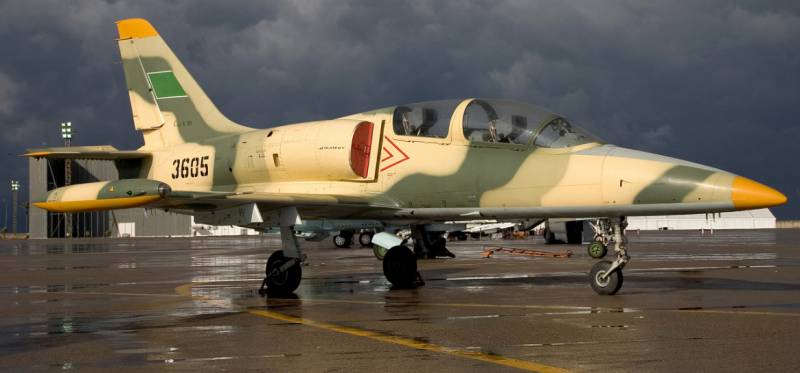
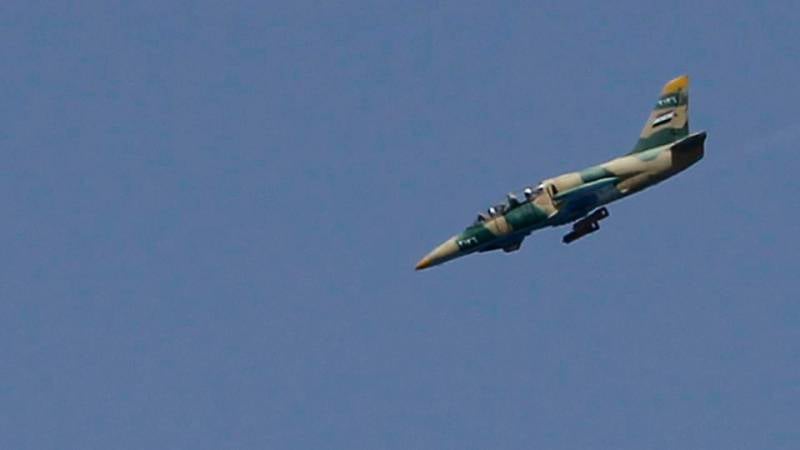
Information